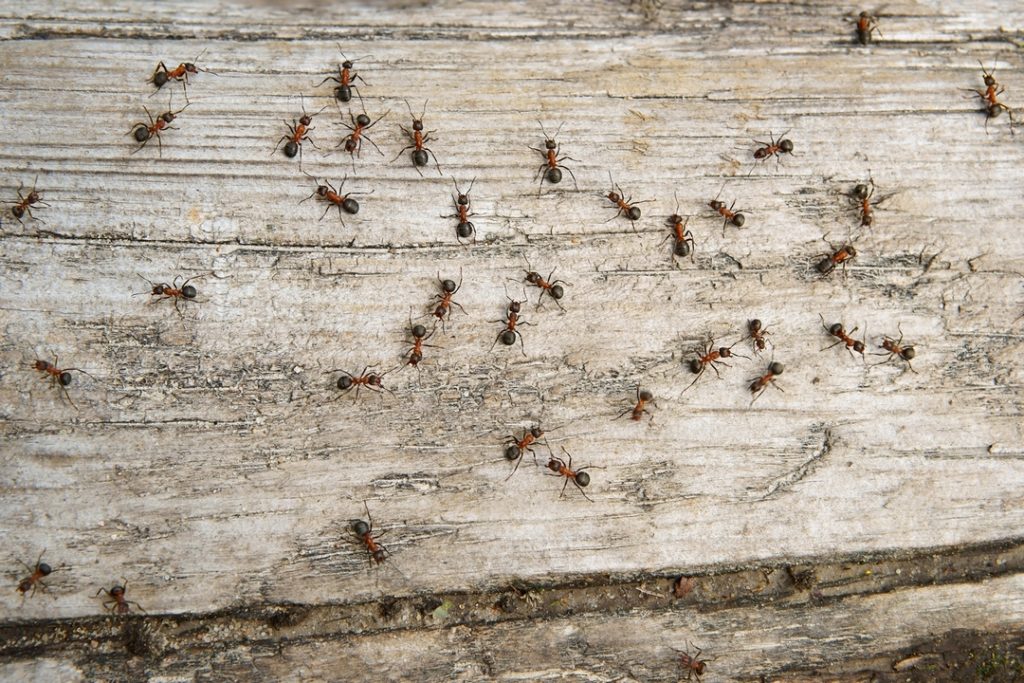
Carpenter ants are large ants that are attracted to wood and nest in many different types. Although the damage caused by carpenter ants is not as severe as termites, they can cause significant issues over a period of years as the colony grows and their presence is left untreated.
Because a home is largely made of a wooden frame, it is imperative that steps are taken to prevent them from being attracted to a house and address them as soon as a colony is discovered to mitigate the damage that can be caused.
Below are 5 pest control methods to prevent carpenter ants at your home.
1. Protect wood

Not only do carpenter ants like to burrow into wood, they like moist and damp wood. As a result, all types of wood found outside of your home is vulnerable to carpenter ants due to it being exposed to rain and dew. Areas such as window sills and doorframes are also vulnerable to carpenter ants. To prevent a carpenter ant from penetrating wood outside of your home and eventually finding their way indoors, consider applying a product that offers long-term protection of wood from carpenter ants.
If you have firewood stacked outside there is not much you can do to prevent carpenter ants from nesting in it but keep it away from your house to remove their ability to find routes into your home. Inspect the wood before bringing it into your home is an effective method of pest control to prevent ants from being carried in and nesting.
2. Seal cracks

Because ants are relatively small, they can find their way into the smallest of spaces and cracks around your home. As a result, you need to be diligent in removing any entrances to your home that a carpenter ant may enter. Using a product such as spray foam or caulking, seal any cracks around your house’s foundation specifically around utility pipes, wires, and windows.
3. Keep outside clean

Keeping the outside of your home clean and tidy will minimize the chances of carpenter ants finding their way into your home. Trim trees and bushes that are near your home as ants nesting in branches use limbs as bridges to your house. As mentioned, carpenter ants are attracted to wood heavy with moisture. Be sure to remove any dead trees, branches, or stumps around your yard to prevent carpenter ants from nesting in them.
4. Address moisture issues

Because carpenter ants seek moist and damp environments to nest in, a homeowner needs to confirm that their home is free of excessive moisture to prevent an infestation. Check the caulking around doors and windows to make sure that they are keeping moisture out. Check basements and crawlspaces for dampness and run dehumidifiers to eliminate any moisture that will draw carpenter ants in. Check the areas where pipes and wires enter the house to ensure no water is entering spaces around these entrance points. Also check for any plumbing leaks, overflowing gutters, or roof leaks in the attic to prevent creating tempting nesting areas for carpenter ants.
5. Consider perimeter insecticide

As discussed, there are products you can use to treat wood outside of your home that offer long-lasting protection against carpenter ants, but you can also choose to use an insecticide that is sprayed around the whole perimeter of your home. The spray is applied to the foundation one foot up from the ground and it is undetectable to ants. Once an ant comes into contact with the surface treated with the spray, it sticks to their bodies and they carry it back to the colony, effectively infecting and eventually eliminating it.
